Interview by Nina Lesowitz

In this interview, Dr. Susan Allison shares her wisdom about “writing what you know” and her publishing experiences with large publishers (Random House), smaller presses, and, self-publishing.
“What has worked for me in writing Conscious Divorce and the books that followed, is to write about what I am deeply experiencing, and what I feel compelled to share with others. I’ve written about how to end a relationship amicably, create a new life as a single woman, heal physically or emotionally, find one’s soul mate, cope with a partner’s passing, and connect with loved ones in spirit realms. Every book has its seed in my own life-journey.”
“In 2001 when I published Conscious Divorce, Ending a Marriage with Integrity, I was going through a divorce and couldn’t find anything helpful, so I wrote my own book.”
We asked how this book came to be published by a division of Random House.
“I found a great agent, Anne Edelstein, in New York, and within two weeks of sending it out, it was picked up by Harmony Books/Three Rivers Press.”
“What I found, and have experienced since, is finding an agent and publisher is about connections. I called a friend’s sister in New York who had been an editor at Bantam and she gave me the names of five agents.”
“When I called Anne Edelstein, she said, “Oh, how is Nancy and the new baby?” We talked about my book, and then she said, “Oh my gosh, I have to go pick up my kids! Call me in the morning.” I loved how real she was. Anne taught me about editing and publishing, as well how to get a great advance and contract. My editor at Harmony had gone through a difficult divorce and they had just lost Spiritual Divorce to HarperCollins. It was perfect timing for my book.”
“I then met Bill Gladstone at a conference and he became my agent at Waterside. However, even with an agent, finding a publisher for Empowered Healer, Gain the Confidence, Power and Ability to Heal Yourself (2012), proved difficult, and I ended up self-publishing with Balboa Press. It was a mixed experience, and I still prefer a traditional publisher for the levels of support.”
“In some ways it doesn’t matter what sort of publisher it is because the author does most of the marketing. Neither Random House nor Balboa Press did a great job of marketing my books.”
“My poetry books, Breathing Room and Our Spirits Dance, were published by small presses. I have found that unless you are a well-known poet, it is difficult to get a traditional publisher and any sort of advance. I feel good knowing that Breathing Room has helped women going through a breakup, and Our Spirits Dance lets readers know that soul mates are real, and loving someone is worth the risk of losing them.”
“My husband Tom passed away in 2013. Our spiritual connection and my heartbreak propelled me to write two books, Our Spirits Dance (2014) and You Don’t Have to Die to Go to Heaven (Weiser Books, 2015).”
“Again, I followed my intuition and connected with others. I emailed Brenda Knight, whom I had met while having many of her authors on my radio show. She liked the concept of my book, You Don’t Have to Die…., but said that Jan Johnson at Red Wheel/Weiser would be the perfect publisher.”
“I contacted Jan and she loved the book, decided that she would edit it herself and we agreed on a contract. I loved my experience at Weiser and with Jan (now retired), who is an amazing person as well as a gifted editor and publisher.”
“Currently, I just finished Silver Sex, a book about finding love and passion as you age. Even though it’s done, so am I! I feel burned out and can’t seem to find the energy to publish it. I had started a new book, Good-Bye Good Girl, but can’t seem to work on it either. I need a break and am taking it!”
“I used to feel afraid of “writer’s block” until a local poet, Maude Meehan, said, “There’s no such thing as writer’s block; you are composting, all the ideas and words germinating inside you.” So, I guess I’m composting, which consists of traveling, walking my dog on the beach, gardening, reading, and spending time with those I love.”
“My best friend said recently, “Yeah, this will last until you’re bored. Then you’ll publish the book and write the next one. I know you.” Maybe she’s right. For now the worms of inspiration are quietly creating more space, more rich soil for new seeds.”
You can contact Susan via her website at drsusanallison.com
Susan is an Empowered Healer, Reiki Master, Transpersonal Psychologist and successful author has also hosted two radio shows – “The Empowered Healer Show” and “We Carry the Light.” Over several years she has interviewed such luminaries as Jack Canfield, Barbara Marx Hubbard, Bernie Siegel, Larry Dossey, and many others. She has been interviewed by radio and TV hosts across the country, and has been a keynote speaker at conferences in the United States and Europe, her favorite being “The Children of Light” Conference in Frankfurt, Germany. Her CD of original songs “We Carry the Light” was released at this event.

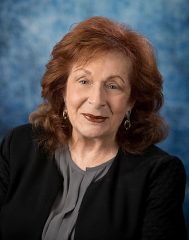
 Patricia V. Davis is a proponent of what she calls “female dynamism” – which signifies women taking positive action to support each other. It’s why she founded the Women’s PowerStrategy™ Conference, and why she is a big supporter of the Women’s National Book Association. Here she tells us about her journey to becoming a novelist.
Patricia V. Davis is a proponent of what she calls “female dynamism” – which signifies women taking positive action to support each other. It’s why she founded the Women’s PowerStrategy™ Conference, and why she is a big supporter of the Women’s National Book Association. Here she tells us about her journey to becoming a novelist. “The second book in the Queen Mary trilogy, Spells and Oregano, was released five months ago, so, I’m currently promoting Books I and II while writing Book III, Demons, Well-Seasoned. You might be able to tell from the titles that these are magical realism, and I love the genre, so I have a vague idea of what I might write once this trilogy is complete. That book, whatever it is, will be a standalone, because promoting two books while writing a third is… well, it’s indescribable. But every time I feel exhausted by it all, I remember how long I waited to do this and it gives me a burst of energy. I’m on Facebook a lot, I’m available by email, and there’s a great page
“The second book in the Queen Mary trilogy, Spells and Oregano, was released five months ago, so, I’m currently promoting Books I and II while writing Book III, Demons, Well-Seasoned. You might be able to tell from the titles that these are magical realism, and I love the genre, so I have a vague idea of what I might write once this trilogy is complete. That book, whatever it is, will be a standalone, because promoting two books while writing a third is… well, it’s indescribable. But every time I feel exhausted by it all, I remember how long I waited to do this and it gives me a burst of energy. I’m on Facebook a lot, I’m available by email, and there’s a great page 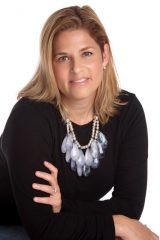 WNBA-SF Board member Sharon McElhone became obsessed with writing at 18 years old after reading a life-altering novel and has been writing articles, poems, and essays ever since. Today, her seventh book is nearing completion.
WNBA-SF Board member Sharon McElhone became obsessed with writing at 18 years old after reading a life-altering novel and has been writing articles, poems, and essays ever since. Today, her seventh book is nearing completion.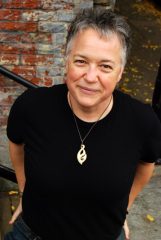 From cappuccinos to creative non fiction: new member Kate Carroll de Gutes shows how persistence pays off in getting published.
From cappuccinos to creative non fiction: new member Kate Carroll de Gutes shows how persistence pays off in getting published.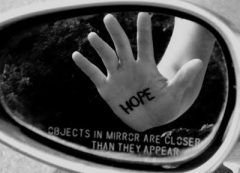 “If I have any advice, it’s to knock on doors, use your network, and ask for what you want. That means asking friends to write reviews, host house parties, and talk about your book—authentically, of course—on social media. It means teaching and taking every opportunity that comes along, because you never know who you might meet or who might buy your book from you. Oh, yeah, and you do have a box of books in the back of your car, don’t you? I can’t tell you the number of times I’ve sold two or three books right out of my trunk to some old friend I’ve run into at a restaurant or on the street.
“If I have any advice, it’s to knock on doors, use your network, and ask for what you want. That means asking friends to write reviews, host house parties, and talk about your book—authentically, of course—on social media. It means teaching and taking every opportunity that comes along, because you never know who you might meet or who might buy your book from you. Oh, yeah, and you do have a box of books in the back of your car, don’t you? I can’t tell you the number of times I’ve sold two or three books right out of my trunk to some old friend I’ve run into at a restaurant or on the street.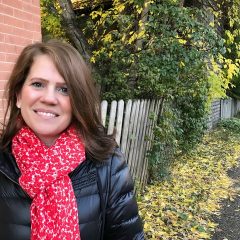 From insurance representative to award-winning children’s illustrator, member Alexandra MacVean tells us about the life-changing events that lead to her rewarding career change.
From insurance representative to award-winning children’s illustrator, member Alexandra MacVean tells us about the life-changing events that lead to her rewarding career change.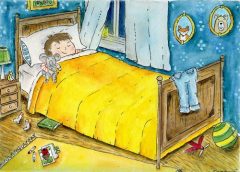 “Writing and/or illustrating a children’s book takes time! One thing I’ve heard over and over (from agencies, publishers, editors, etc.) while attending various conferences is that a solid, good book takes AT LEAST a year to complete, sometimes longer. Here are some tips:
“Writing and/or illustrating a children’s book takes time! One thing I’ve heard over and over (from agencies, publishers, editors, etc.) while attending various conferences is that a solid, good book takes AT LEAST a year to complete, sometimes longer. Here are some tips: WNBA-SF’s newest Board Member Gauri Manglik is on a mission to share South Asian culture with children through literature. We wish her every success with her career change and important new venture.
WNBA-SF’s newest Board Member Gauri Manglik is on a mission to share South Asian culture with children through literature. We wish her every success with her career change and important new venture.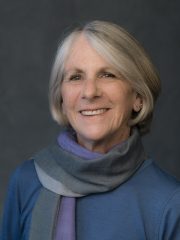
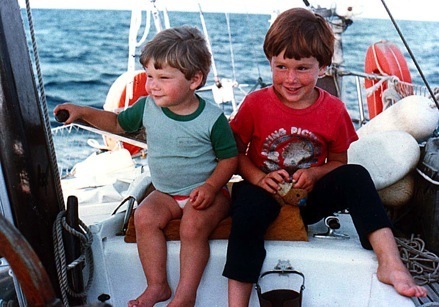 “GPS did not exist then, let alone cell phones, personal computers, or the Internet. Some boats had the capability to receive weather faxes. My husband accomplished all our navigation with an old fashioned, yet reliable, sextant. It was difficult to maintain regular contact with family and friends using only the ham radio and marine band radios. We received our mail via postal general delivery in the various countries we arrived in, and sometimes our mail never arrived. For a while we taught our children with correspondence homeschooling courses, and could only send the lessons back through the mail when we got into port. There was no online connection. Our navigational charts were actual printed charts and maps.”
“GPS did not exist then, let alone cell phones, personal computers, or the Internet. Some boats had the capability to receive weather faxes. My husband accomplished all our navigation with an old fashioned, yet reliable, sextant. It was difficult to maintain regular contact with family and friends using only the ham radio and marine band radios. We received our mail via postal general delivery in the various countries we arrived in, and sometimes our mail never arrived. For a while we taught our children with correspondence homeschooling courses, and could only send the lessons back through the mail when we got into port. There was no online connection. Our navigational charts were actual printed charts and maps.”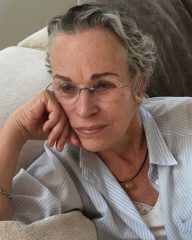 Member Renate Stendhal’s newest book, Kiss Me Again, Paris, a visual-textual memoir, came to her out of her fondness for Gertrude Stein and her fascinating life arc from Germany to Paris and now the Bay Area. Aspiring memoirists can learn a lot from Renate’s process and her expert advice for writers.
Member Renate Stendhal’s newest book, Kiss Me Again, Paris, a visual-textual memoir, came to her out of her fondness for Gertrude Stein and her fascinating life arc from Germany to Paris and now the Bay Area. Aspiring memoirists can learn a lot from Renate’s process and her expert advice for writers.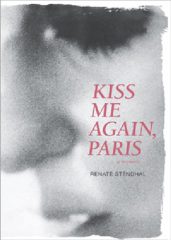 To meet Renate, and hear her speak, there will be several readings in the SF-Bay Area: For details go to
To meet Renate, and hear her speak, there will be several readings in the SF-Bay Area: For details go to  Four-time author and wellness coach KJ Landis joined WNBA-SF and hit the ground running by joining the board and taking responsibility for key roles in events including
Four-time author and wellness coach KJ Landis joined WNBA-SF and hit the ground running by joining the board and taking responsibility for key roles in events including